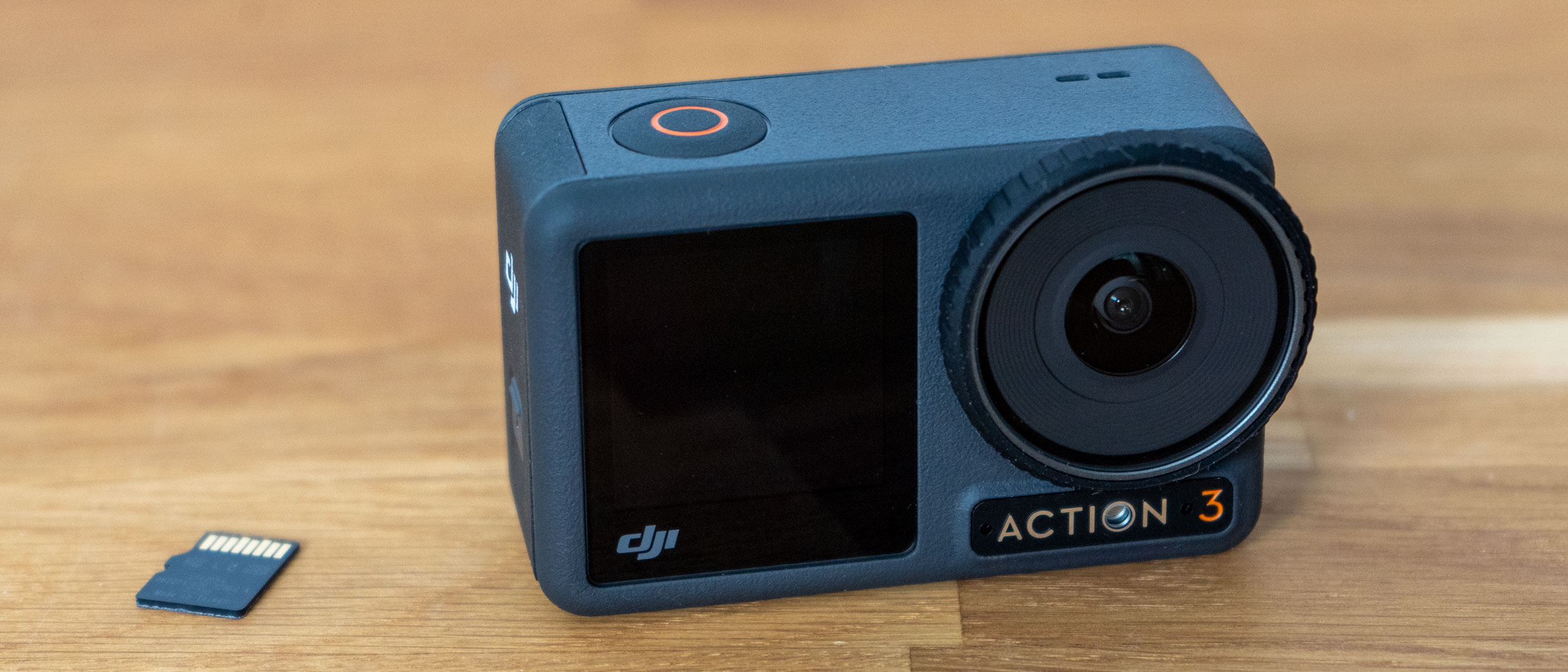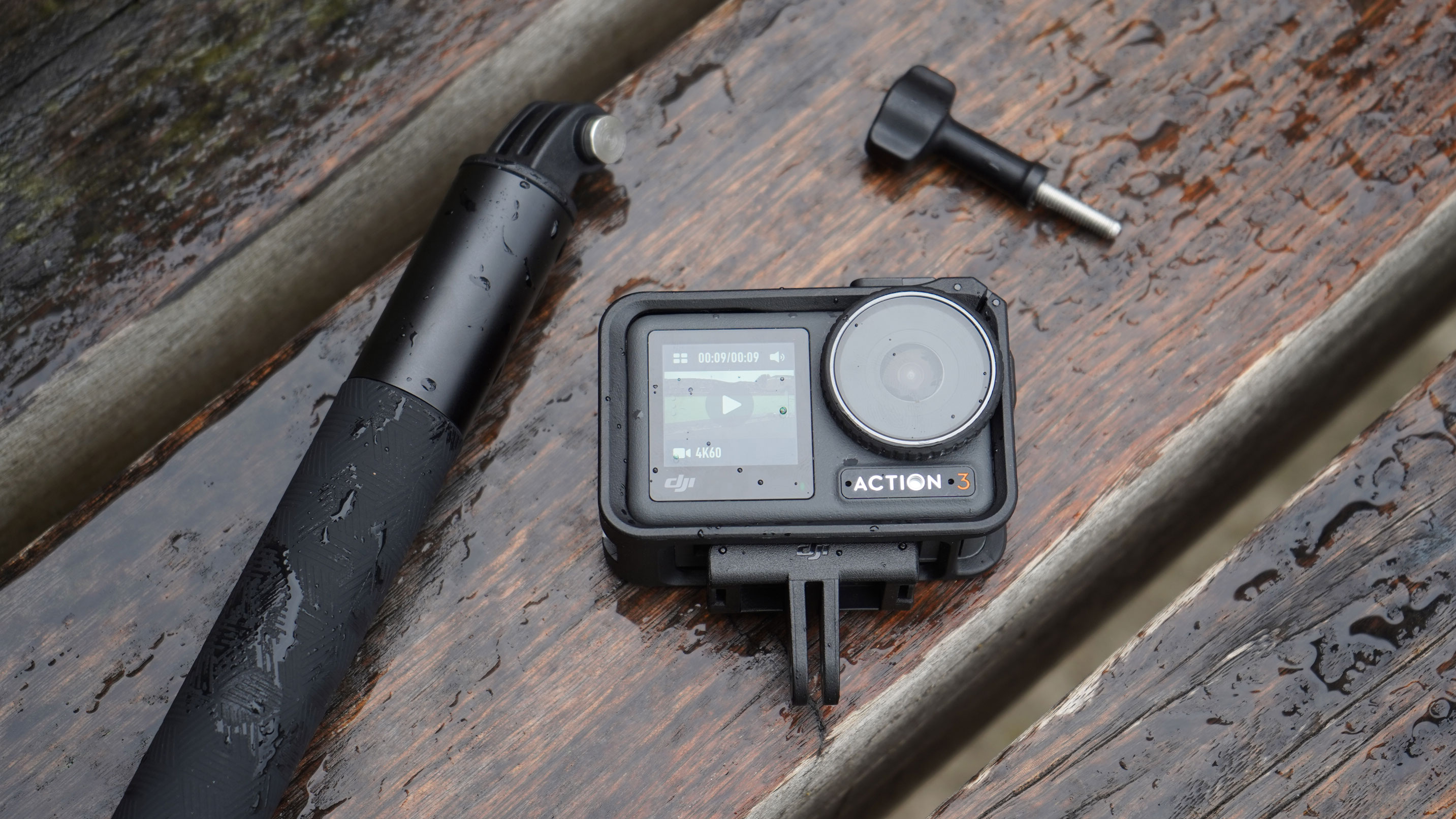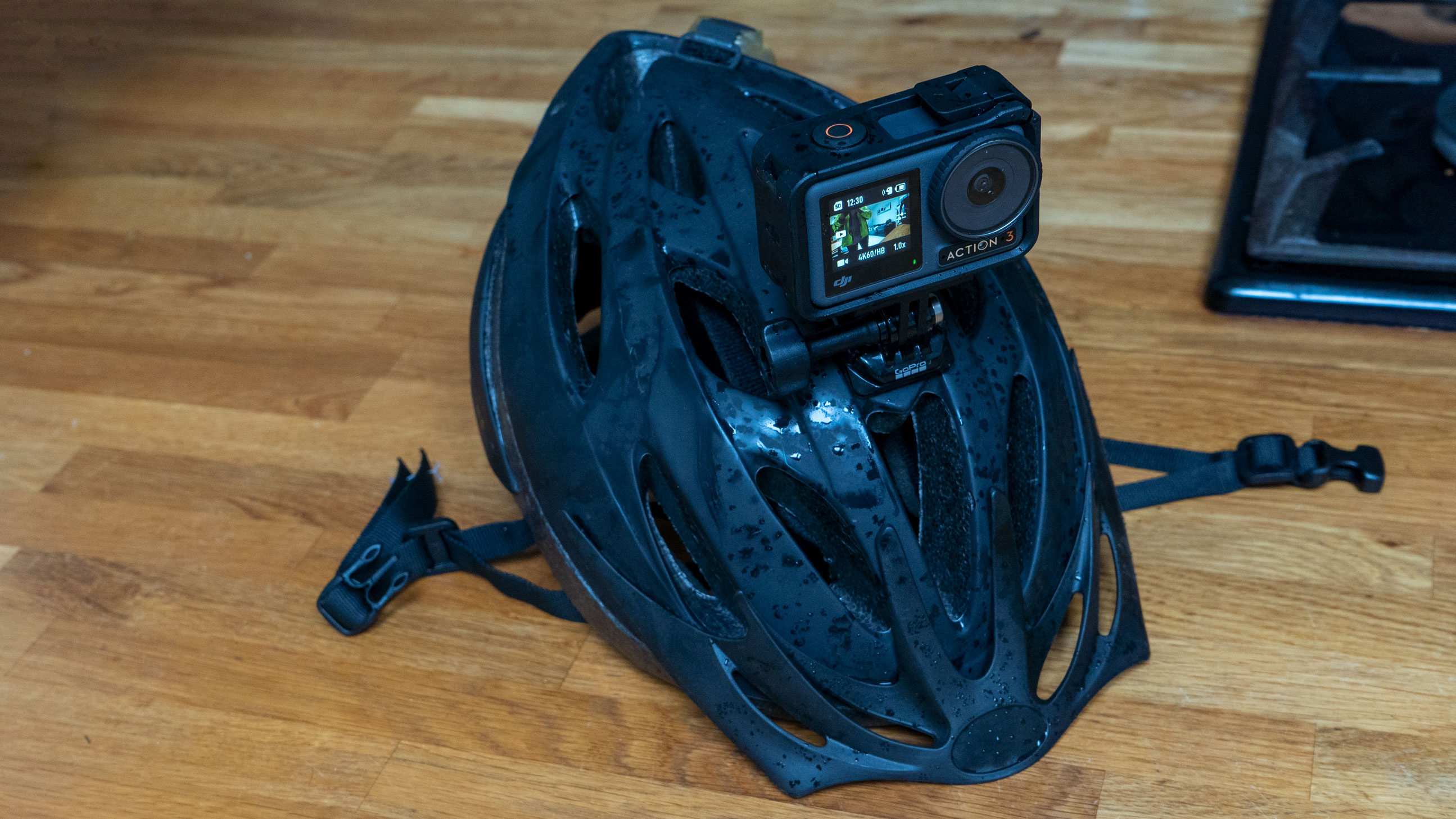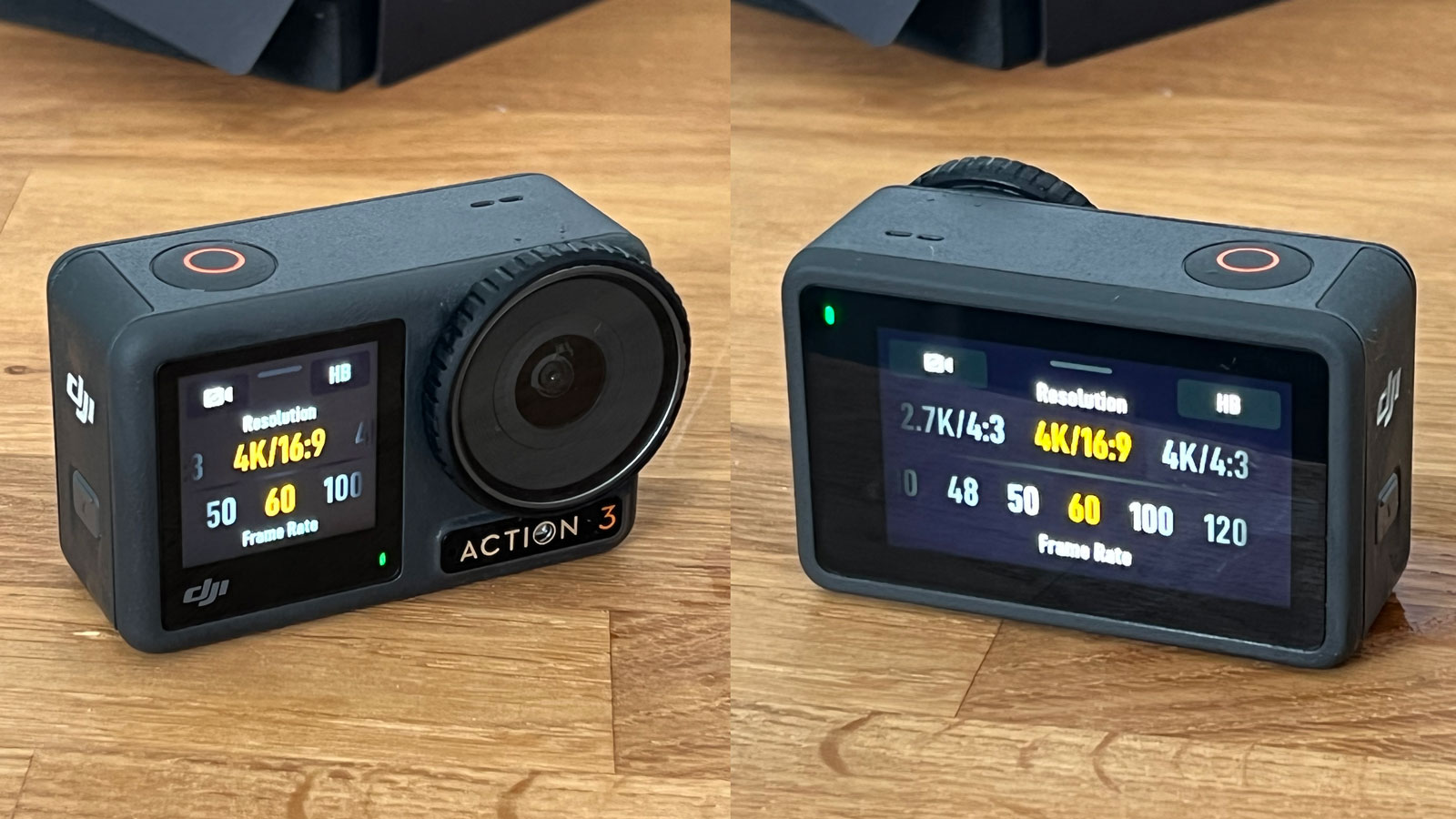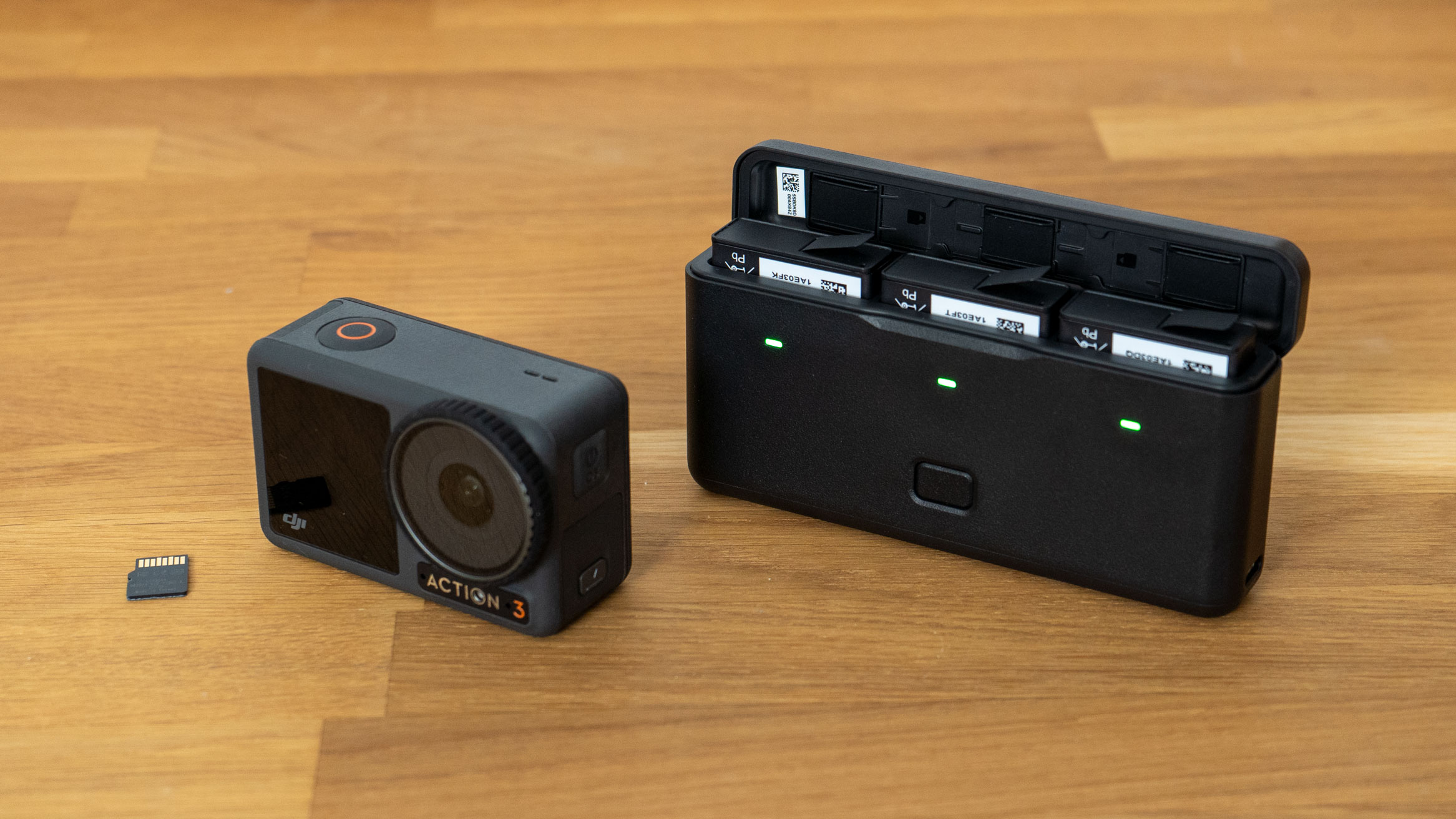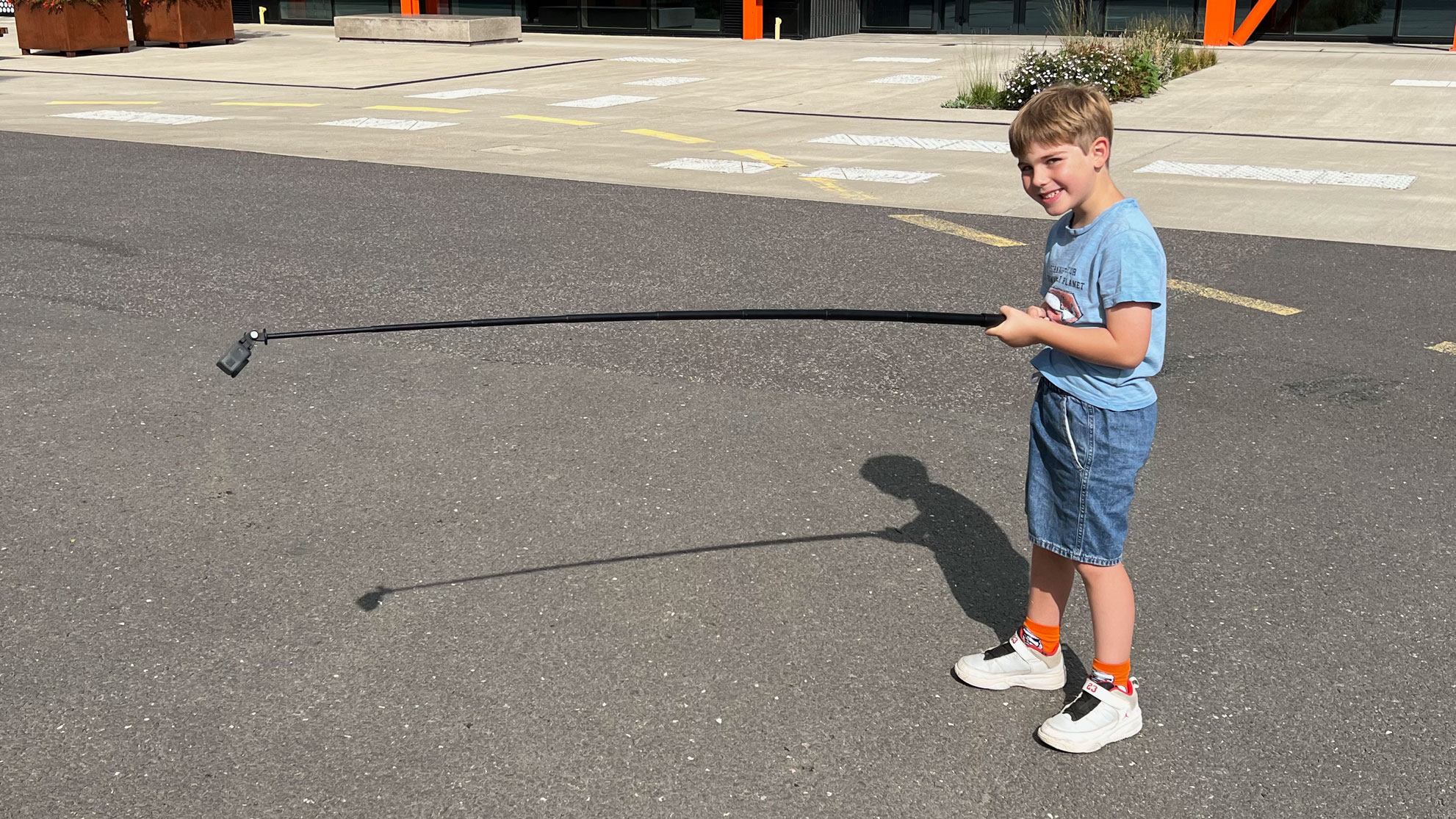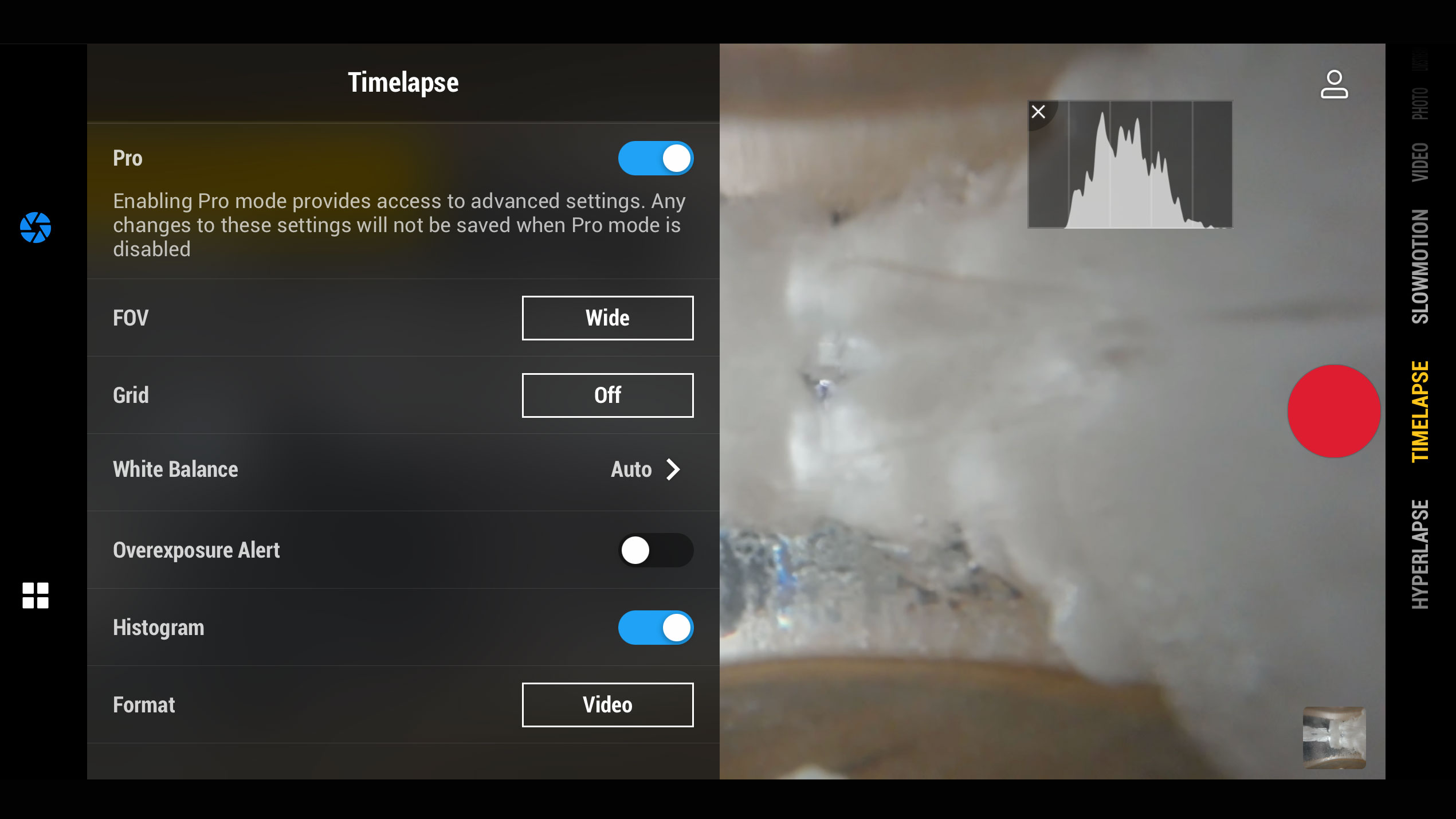Digital Camera World Verdict
For most adventurers, the Osmo Action 3 is the perfect balance of quality and price. Stabilized 4K video looks great and the camera can take a lot – not just rough and tumble but temperature extremes. It isn’t cheap, but the RRP is comfortably less than a similar GoPro and won’t push you towards a subscription after 12 months.
Pros
- +
Dual touchscreen control
- +
Good vlogging tool in vertical or horizontal
- +
No module confusion (compared to Action 2)
- +
Extreme batteries included as standard
- +
Cheaper than GoPro
- +
No subscription payments required
Cons
- -
12-megapixel images and 4K maximum video resolution
- -
No period of cloud backup included
- -
We’d like to see a start and stop timer
- -
Vertical format use requires frame
- -
Voice control somewhat spotty
Why you can trust Digital Camera World
In 2019 DJI – already kings of the skies – took aim at GoPro with the Osmo Action. A lower price and the addition of a color front screen amounted to key features which eased aside the established camera, but that was the GoPro Hero7 Black. Times have moved on for both companies.
DJI’s follow-up – the Osmo Action 2 – reinvented the genre by attempting to be two devices in one. Made of magnetically detachable squares, the Action 2 was innovative and offered the option of small-and-light or longer battery life and reversible monitor.
We found ourselves enthusiastic about the unusual design (see our DJI Action 2 review) but it wasn’t without issues, not least that the separate components with contacts meant housing was needed for all underwater photography, extra parts weren’t cheap and battery charging took time.
In the meantime, GoPro is launching a Hero 11 Black, and Insta360 have also been making an impression in the space. The term ‘GoPro’ might be near-universal, but let's see if the Osmo Action 3 will be the king of the new generation.
Design and features
A glance at the Osmo Action 3 shows DJI has reverted to a more traditional single-unit design of 70 x 44 x 32mm (2.76 x 1.73 x 1.25 inches). This may abandon some of the gadget cool factor from its modular predecessor, but it allows for a single replaceable battery which can offer up to 210 minutes of operation. It is also waterproof with no additional housing up to 16m (52ft) – beating the GoPro Hero10 by 6m (20ft).
The 155˚ lens (12.7mm EFL) is mounted in a screen which serves to protect the camera. The raised rim and supplied rubber rim should prevent damage affecting the view.
The Action 3 case tucks a color sensor in the ‘O’ of the Action 3 badge which can quickly shift white balance during a shot as, for example, you break the surface of the water. There are also three microphones – two at either end of the word ‘Action’ and another atop the case. These serve to provide active noise cancellation.
The best camera deals, reviews, product advice, and unmissable photography news, direct to your inbox!
The unit weighs in at a not inconsiderable 145g; that’s normal for an action camera but will be noticeable on an ordinary commuting bike helmet (though still 5g lighter than the GoPro Hero 10)
Like the recent DJI Mini 3 Pro, DJI has given vertical-format creatives some thought too. The camera’s gyros detect which angle the camera is being used at and record automatically at the correct one (a lock is available), and the clip-in frame includes a vertical mount.
The camera’s ‘Quick-Release Adapter Mount’ is a combination of magnet and clip – the camera is pulled onto the mount and (with a bit of a nudge, we found) clips into place. It certainly didn’t come off in our various tests; DJI say it’ll even withstand a bike crash, but we didn’t feel motivated to test that in person!
There are several other handy features. The camera’s USB-socket can also be used so it serves as a webcam. When you plug it in via USB it simply asks whether you want to transfer files or use it as a webcam. The device also supports Wi-Fi livestream at up to 1080P at 30fps, with YouTube, Facebook and RTMS setup available.
Osmo Action 3: Usability
DJI hasn’t abandoned everything from the Action 2. The dual touchscreens with matching interface make things straightforward in the field, while the DJI Mimo app offers phone-based operation for less nimble fingers or remote operation.
We found the sharp 326ppi screens to be a pleasure to use, as smooth as butter and very bright. The rear screen is 2.25-inch and 360x640 pixels, in keeping with the 16:9 ratio of video. The 320x320 front screen by necessity offers a cropped view that is nevertheless enormously helpful in framing up a to-camera piece for vlogging.
Where things start to get a little tricky is in the wet. The screens were responsive to wet hands, but we still found heavy rain made the screens a little less easy to operate. Here, though, is where the camera’s instant-on feature comes into its own; the camera can power up and start shooting in the most recent mode using nothing more than the physical shutter button. Another press will stop and power down.
What at first appears to be a power button DJI fashion as a ‘Quick Switch’ and a short press allows changing the mode, so the two keys together can be used to achieve main operations easily underwater. Above the surface voice control is an option. We were able to say “Start Recording” successfully more than half the time, but we wouldn’t rely on it.
DJI’s interface does a good job of keeping frequently needed operations like resolution and frame-rate switching within easy reach, but without depriving the user of Pro functions including D-Cinelike.
Osmo Action 3: Performance and battery
We tested the Osmo Action 3 Adventure Combo, which included three of what DJI call the ‘Extreme Battery’ and a ‘Multifunctional Battery Case.’ The case is a charging hub, into which three of the batteries can be left to charge without swapping. Indicator LEDs show red when they’re dead, amber above 20% and green when they’re ready to go.
If you’re used to DJI drones this isn’t quite the level of feedback you’re used to. If you use the camera as a charger you get a pulsing LED which indicates charge in 4 stages, somewhat more like the smart batteries. It’s hardly a serious complaint, but it seems inconsistent if you’re a regular DJI drone pilot.
More significant is the time the 1770mAh battery can offer and that is impressive. DJI say it can operate for as long as 160 minutes, and in our testing we got it to past 120 with the front screen on. That comfortably eclipses the Action 2 and the GoPro Hero10.
Perhaps more impressive than the extra minutes is the battery’s endurance in poor conditions. DJI says the battery will operate down to -20˚C (-4˚F) and the Extreme Battery is supplied by default (GoPro’s Hero10 Enduro Battery is an optional extra and will operate down to -10˚C / 14˚F battery temperature).

Charging has also got a lot faster than the previous generation, with the camera itself featuring built-in fast charge support. DJI claim 0-80% in 18 minutes and 0-100% in 50 and we found this to be more or less accurate in testing.
DJI Osmo Action 3: Camera
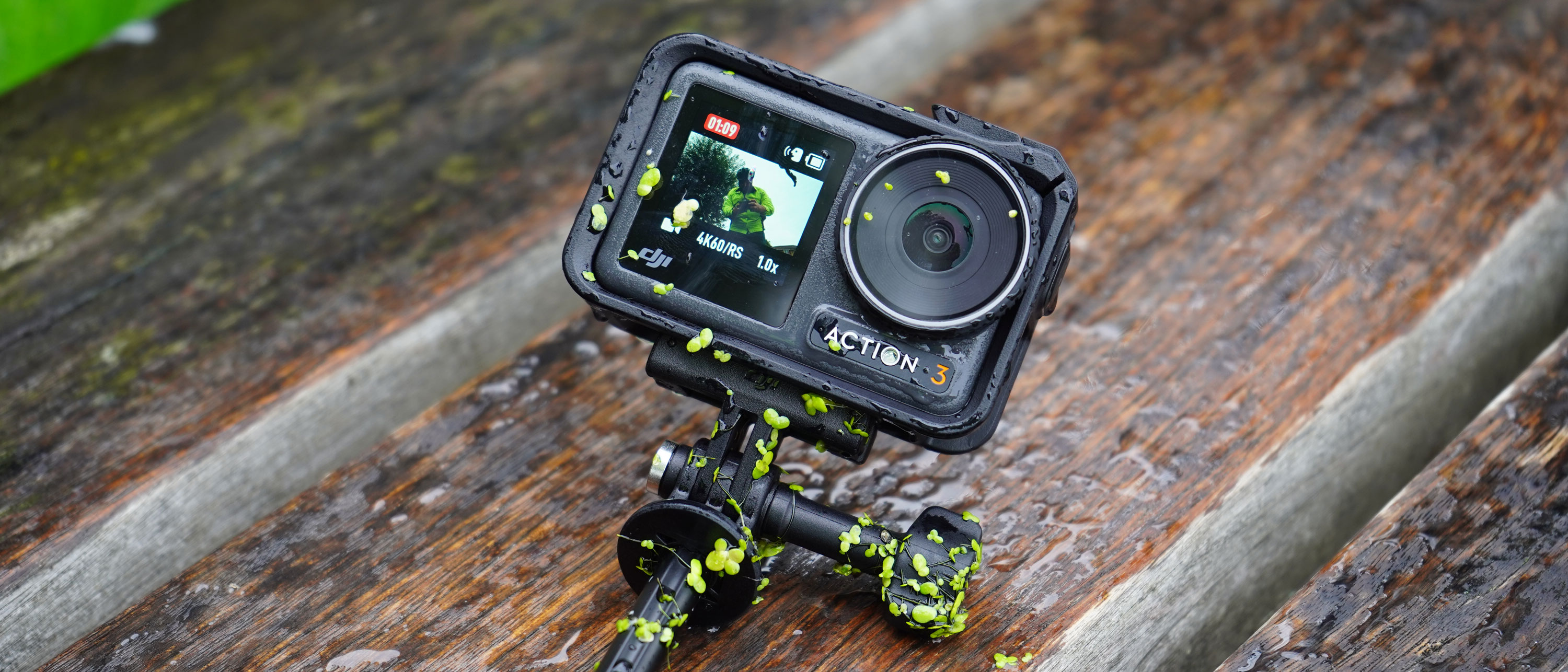
The release of the Action 3 is so soon after its predecessor that while it still has a 1/1.7-inch sensor, it also still beats the leading GoPro (Hero10’s) sensor size. That, of course, could change soon. DJI have stuck with 4K as the maximum resolution, even though said GoPro can manage 5.3K.
There is a rule of diminishing returns, however, with resolution. For most 4K will be all the resolution required, especially where EIS (electronic image stabilization) produces smooth output at that standard. 4K, after all, is where most TVs max out and will tax editing software and hardware. Moreover the GoPro’s 5.3K is 60fps max; both cameras can 4K 120fps (and 1080P at 240fps).
Selecting a frame rate of 120fps does come with the warning that, at 25˚C (77KF), the camera will overheat after around 9 minutes, but 60fps can run without issues. It’s good to get the warning before you start the shot.
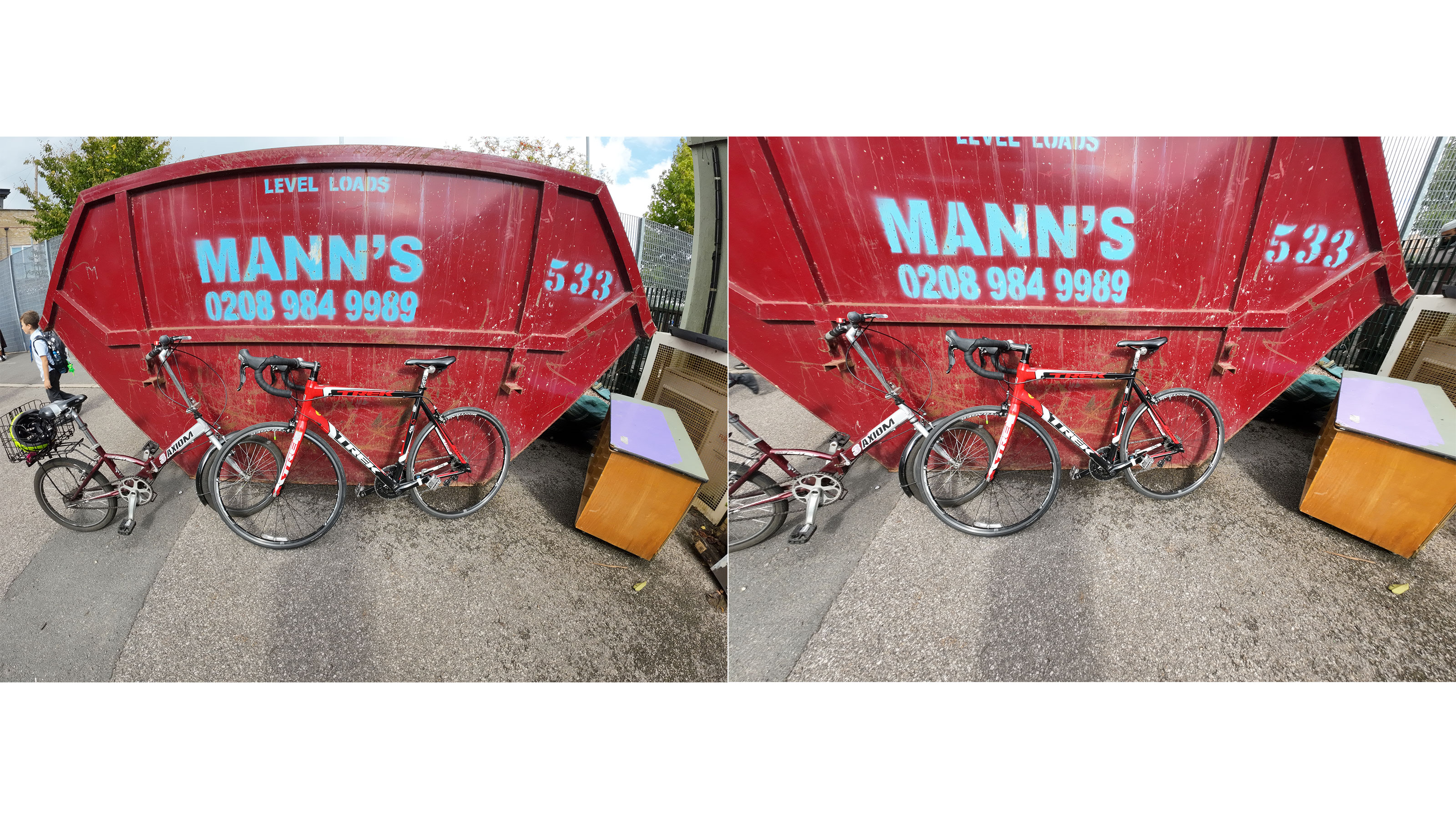
Stills photography is only 12 megapixels in a choice of Wide or Standard (Dwarp), but Raw files are an option as is manual control over exposure, either by choosing an EV target or explicitly setting shutter and ISO. The aperture is fixed at ƒ/2.8 which means any subject beyond 300mm (12 inches) should be in focus.
When it comes to video, the stabilization system is arguably the crucial factor, and in that regard DJI’s ‘RockSteady’ performs very well, either in standard or HorizonSteady modes. In low light things didn’t look as good. The camera offers “EIS Priority in Low Light” so you can sacrifice sharpness in order to reduce motion blur, but ultimately high frame rates indoors aren’t ideal and will produce noise. To be fair, the same can be said of other action cameras. We love DJI’s 360˚ HorizonSteady EIS option, as opposed to the HorizonBalancing which is limited to 45˚, but sadly this is limited to 2.7K.
Video samples
Video samples shot with DJI Action 3
To our eye, the standard video is processed with a good balance of contrast and color, without being as excessive as some. There is the option of D-Cinelike, a flatter profile for post-processing.
Despite the 3-microphone array, we did still encounter some occasional wind noise. When used for vlogging the audio was clear, but definitely better when the stick wasn’t extended to its full height.
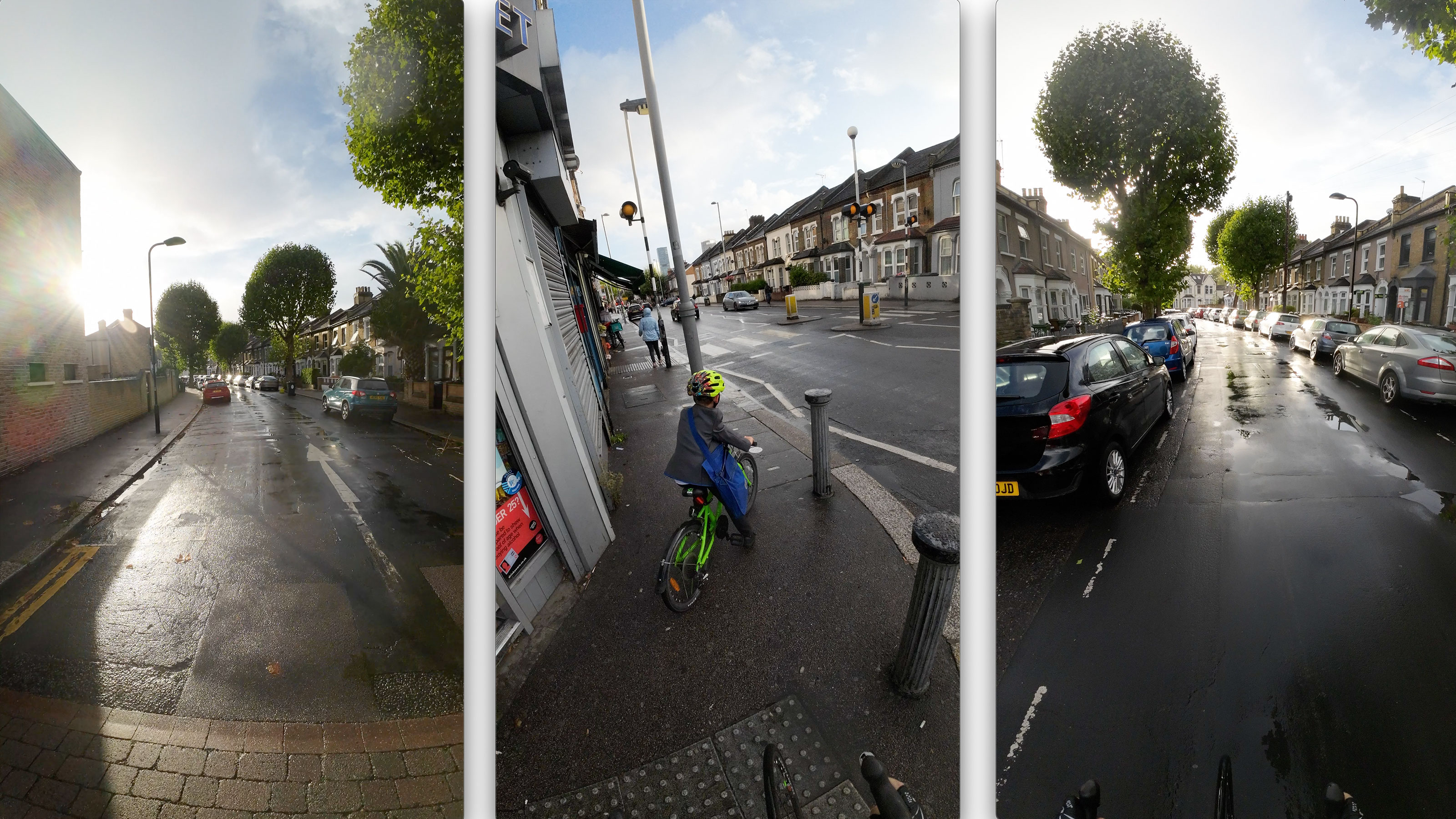
DJI Mimo App
DJI’s Mimo app links to the Action 3 via Bluetooth to establish a connection, then Wi-Fi for the fast download. It make reviewing on the go painless, as well as offering some explanation of the settings. In addition a histogram and overexposure overlay are on offer.
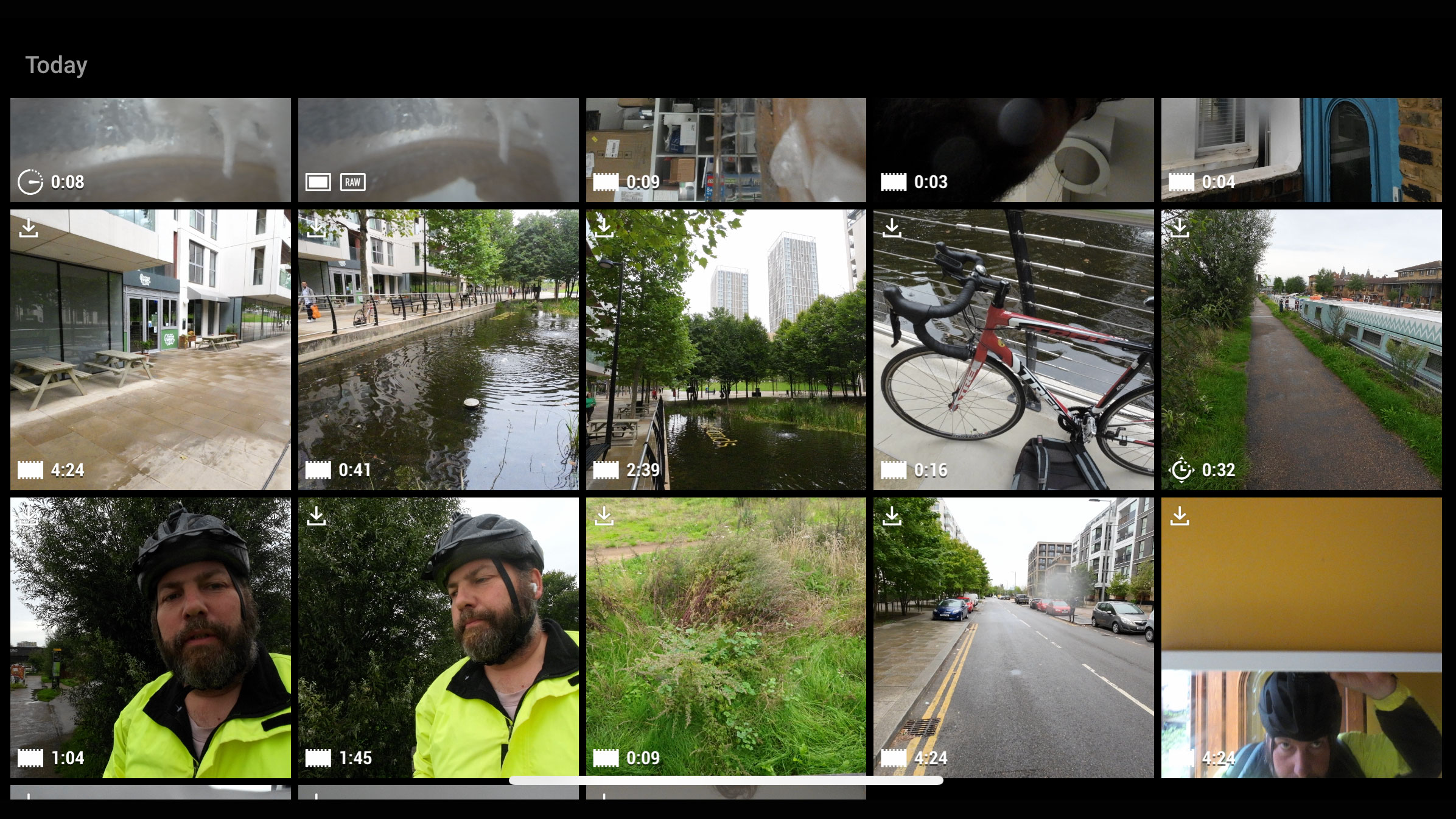
Mimo also includes an editor tool which creates slick looking edits using downloadable templates. We didn’t have a lot of luck with this during testing – on the plus side it allowed access to all our content from other DJI devices and the photo/video collection on the iPhone. On the down-side we got the message ‘Transcoding Error’ more than once. It seems likely this software will update shortly after the Action 3 launch, so for now at least the jury is out.
If privacy is a concern, DJI does ask you to create an account, but it does not require a paid subscription.
DJI Action 3: Verdict
If we’re honest, while it is a little sad to see the modular design seemingly abandoned, the Action 3 is easier to manage and more capable. The only sacrifice is the larger size and weight, but even then it still has the GoPro beat. (A side-note is that the Insta360 ONE RS manages to be both modular and waterproof, but needs three elements.)
The feature-list is still not (quite) as rich as the GoPro Hero 10 (there is no equivalent of ‘Hindsight’) but the price is lower too. In fact in some areas it outperforms its competitor; water resistance, temperature resistance and image sensor size.
The EIS remains excellent from the previous generation; RockSteady and HorizonBalancing both produce smooth video from aggressive action. For most 4K is the ideal resolution for action, especially with up to 120fps.
The fact the Action 3’s isn’t interwoven with subscription software is one we appreciate. GoPro will give you a year of cloud backup and auto upload before their Quik starts asking for more of your hard-earned; here it is much appreciated that no such clock is ticking.
The Action 3's main rival is the GoPro Hero 11 Black. If you're into action, check out the best GoPro alternatives and the best GoPro cameras.

With over 20 years of expertise as a tech journalist, Adam brings a wealth of knowledge across a vast number of product categories, including timelapse cameras, home security cameras, NVR cameras, photography books, webcams, 3D printers and 3D scanners, borescopes, radar detectors… and, above all, drones.
Adam is our resident expert on all aspects of camera drones and drone photography, from buying guides on the best choices for aerial photographers of all ability levels to the latest rules and regulations on piloting drones.
He is the author of a number of books including The Complete Guide to Drones, The Smart Smart Home Handbook, 101 Tips for DSLR Video and The Drone Pilot's Handbook.
